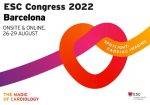The inclusion of fractional flow reserve (FFR) has changed how coronary interventions are treated. Current guidelines endorse its use in intermediate lesions with no evidence of ischemia in non-invasive studies in patients with multivessel disease. The original RIPCORD (Routine Pressure Wire Assessment Influence Management Strategy at Coronary Angiography for Diagnosis of Chest Pain) study proposed<a href="https://solaci.org/en/2022/09/12/ripcord-2-study-routine-assessment-using-pressure-wires-in-acute-coronary-syndrome/" title="Read more" >...</a>
Are FFR and IVUS Similar to Assess Intermediate Lesions?
In coronary artery disease (CAD), lumen area and plaque burden, characteristics and physiological impact are what define prognosis. At present, coronary angiography continues to be the gold standard for CAD assessment. When considering PCI to treat intermediate lesions, FFR has been shown beneficial and safe. Not yet IVUS. 1682 patients with intermediate lesions (40 –<a href="https://solaci.org/en/2022/09/06/are-ffr-and-ivus-similar-to-assess-intermediate-lesions/" title="Read more" >...</a>
Is TCA Useful for Severe Impairment of Left Ventricular Ejection Fraction?
Heart disease is the most frequent cause of heart failure and, in some observational studies, transluminal coronary angioplasty (TCA) could help improve ventricular function. The only major randomized study to compare myocardial revascularization surgery (MRS) vs. medical treatment in patients with ventricular function impairment was the STICH study, which showed no difference at 5 years,<a href="https://solaci.org/en/2022/09/06/is-tca-useful-for-severe-impairment-of-left-ventricular-ejection-fraction/" title="Read more" >...</a>
ESC 2022 | Should We Follow-Up with Functional Testing in High-Risk Patients after CTA?
While the need for repeat cinecoronary angiography after transluminal coronary angioplasty (TCA) has decreased with the use of drug-eluting stents and improved medical treatment, patients still present ischemic recurrence or cardiovascular events at follow-up. Using a functional test at follow-up after TCA or myocardial revascularization (CMR) is a frequent practice in our context. This is<a href="https://solaci.org/en/2022/09/05/esc-2022-should-we-follow-up-with-functional-testing-in-high-risk-patients-after-cta/" title="Read more" >...</a>
RADIANCE-HTN SOLO: Control Durability of BP
In patients with hard-to-control high blood pressure (HBP), both non-pharmacological treatment and lifestyle changes have been useful to improve its control. Renal denevartion (RDN) was assessed as part of this complementary treatment, since some research has shown that this alternative decreases blood pressure (BP) values in different groups treated with either radiofrequency or ultrasound (uRDN).<a href="https://solaci.org/en/2022/09/02/radiance-htn-solo-control-durability-of-bp/" title="Read more" >...</a>
Aspiration Thrombectomy in Acute Coronary Syndrome: Is the Japanese Perspective a Strategy to Emulate?
Aspiration thrombectomy (AT) in patients with high thrombotic burden could pathophysiologically reduce thrombus burden, decrease distal embolization, reduce no-reflow phenomenon, and improve microvascular perfusion. However, its usefulness has not been shown in the large, randomized trials (TASTE and TOTAL) that compared routine use of AT in primary angioplasty in patients with ST-segment elevation acute coronary<a href="https://solaci.org/en/2022/08/26/aspiration-thrombectomy-in-acute-coronary-syndrome-is-the-japanese-perspective-a-strategy-to-emulate/" title="Read more" >...</a>
Clinical Results of IVUS-Guided Drug-Eluting Stent Implantation in Femoropopliteal Disease
Endovascular treatment of femoropopliteal lesions has become the first-line treatment due to the development of devices that decrease the restenosis rate. Recently, the IMPERIAL study showed greater patency at 1 year and greater freedom from clinically guided revascularization at 2 years in favor of the ELUVIA stent (paclitaxel-eluting fluoropolymer, FP-DES) compared with the ZILVER PTX<a href="https://solaci.org/en/2022/08/23/clinical-results-of-ivus-guided-drug-eluting-stent-implantation-in-femoropopliteal-disease/" title="Read more" >...</a>
MitraClip in Patients with COPD: a Valid Option
Chronic obstructive pulmonary disease (COPD) and cardiovascular disease are associated to hospitalization and mortality. When associated to severe mitral regurgitation, not only do these two conditions have poor evolution, but they also limit the possibility of surgical valve replacement, given its high risk. Edge-to-edge repair with MitraClip has been shown beneficial in a group of<a href="https://solaci.org/en/2022/08/17/mitraclip-in-patients-with-copd-a-valid-option/" title="Read more" >...</a>
The Best of the SOLACI-SOCIME 2022 Main Arena: Day 3
Lecture by Dr. Hector García García – LM-PCI: IVUS and FFR/IFR? Dr. Hector García delivered an excellent presentation on whether we should use intravascular ultrasound (IVUS) or fractional flow reserve (FFR)/instantaneous wave-free ratio (iFR) in the left main coronary artery (LMCA) to consider severe obstruction, since there is significant interobserver variability with angiography. Although the<a href="https://solaci.org/en/2022/08/11/the-best-of-the-solaci-socime-2022-main-arena-day-3/" title="Read more" >...</a>
The Best of the SOLACI-SOCIME 2022 Main Arena: PCI by Radial Access
Angioplasty by transradial access was discussed during a session on Day 2. We were pleased to participate in a conference by Dr. Shigeru Saito on distal radial access. Currently, complications associated with transfemoral access are well-established, so transradial access is suggested as the initial strategy in several guidelines of various associations. However, Dr. Saito shared<a href="https://solaci.org/en/2022/08/10/the-best-of-the-solaci-socime-2022-main-arena-pci-by-radial-access/" title="Read more" >...</a>









